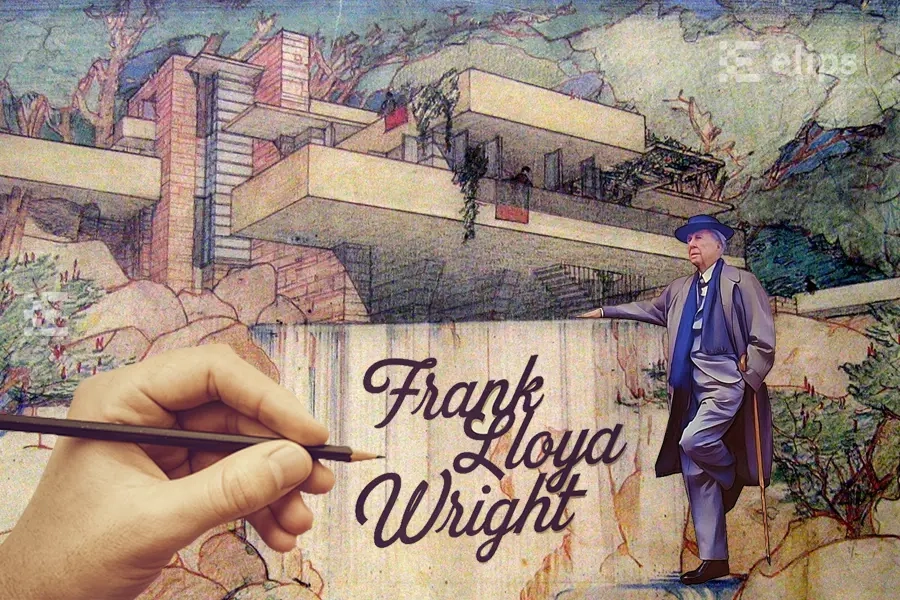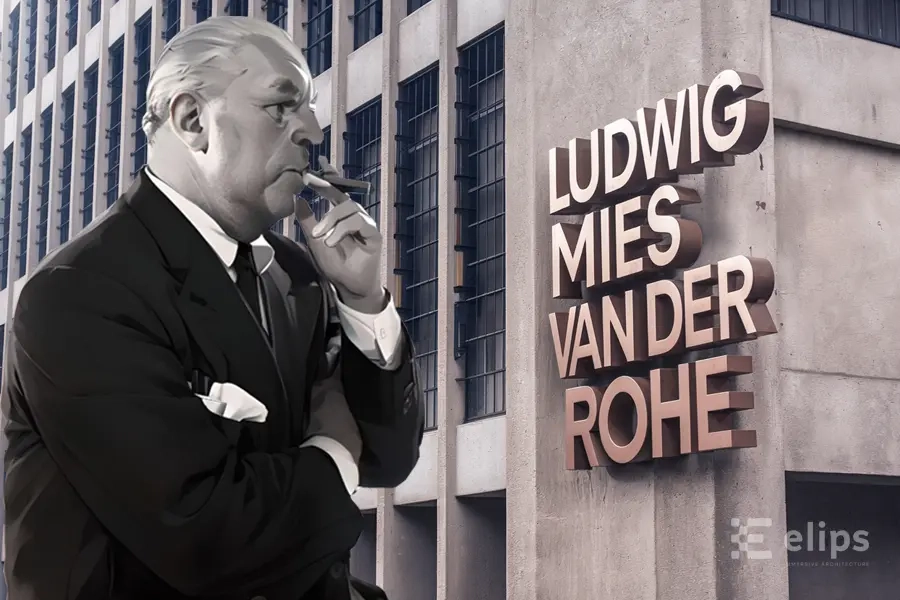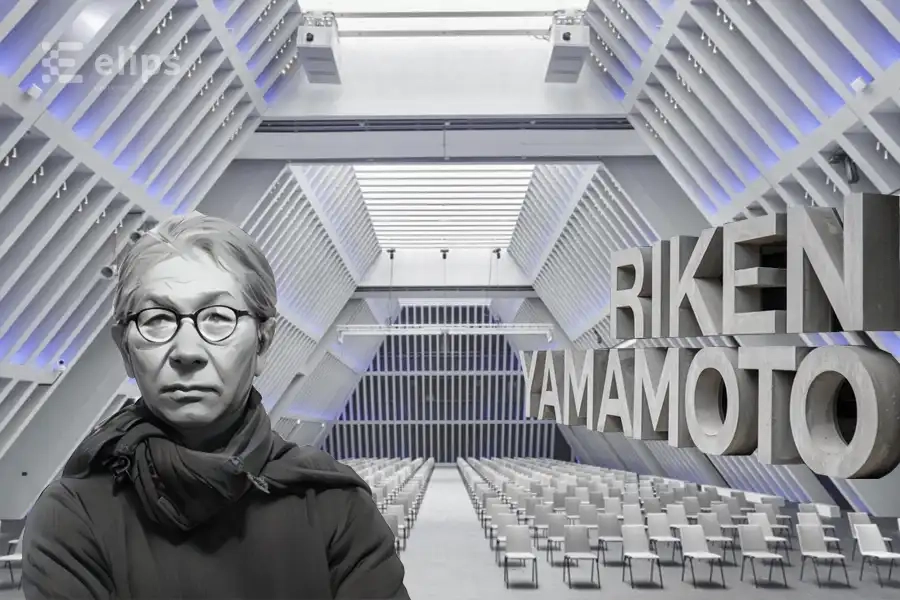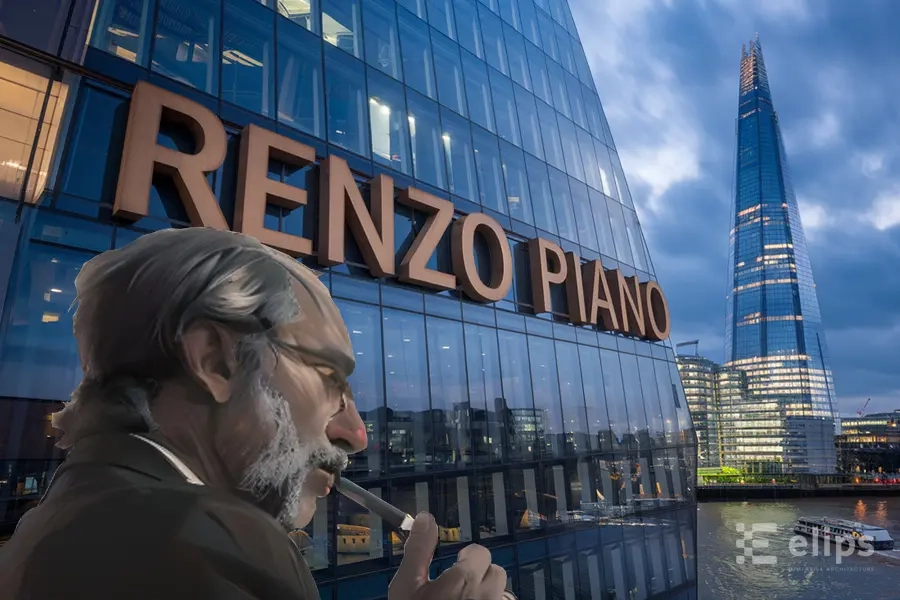No products in the cart.
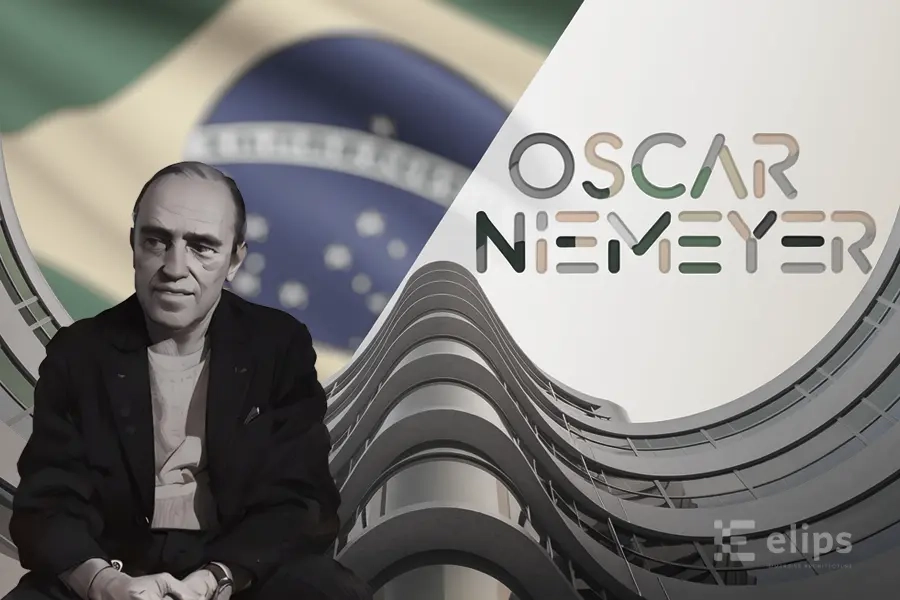
Oscar Niemeyer, architect of Brasília and poet of the curve
The life and work of Oscar Niemeyer (1907-2012), the illustrious Brazilian architect and visionary behind the creation of Brasília, the capital of Brazil.
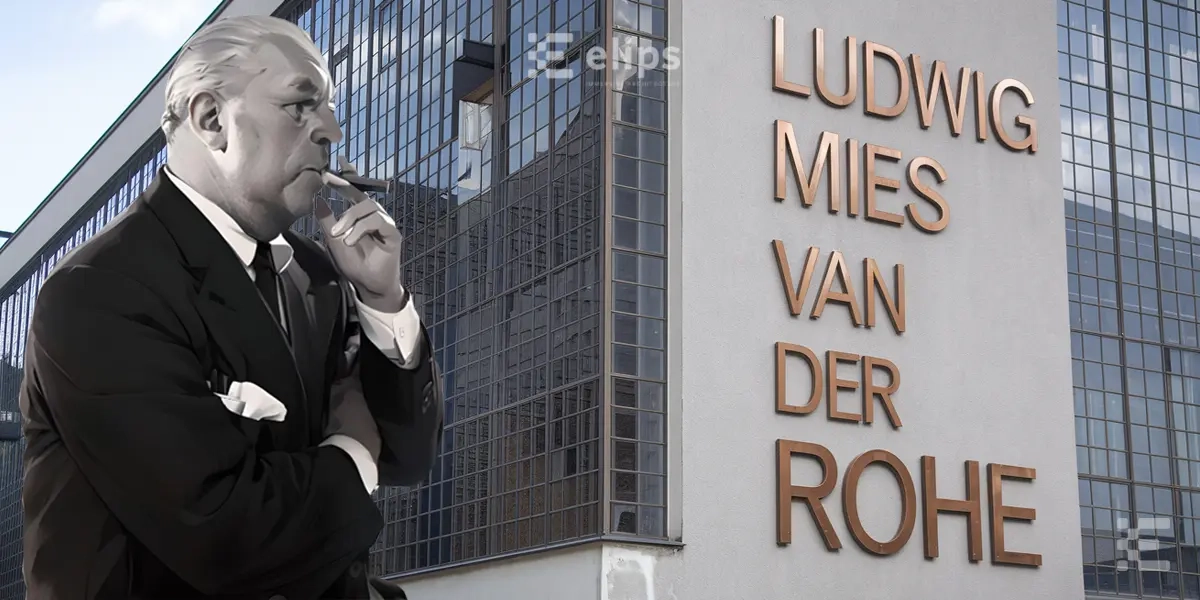
Born March 27, 1886, Aachen in Germany, Ludwig Mies comes from a modest family, Son of Michael Miesstone mason, andAmalie Rohe. A student at a professional drawing school, at the age of fifteen he was apprenticed to local decorators, for whom he created "Renaissance" decors for apartment buildings.
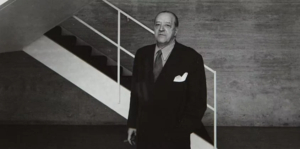
Ludwig Mies Van der Rohe
In 1906, at the age of 19, he disembarked at Berlinthe big city, he became a draughtsman, dragging his pencils around Bruno Paulan architect and designer of the period specializing in the "art nouveau. Two years later, he received his first assignment, a traditional suburban house. His perfect execution so impressed Peter BehrensLudwig, then Germany's most progressive architect, offered the 21-year-old a job in his office. And there, Ludwig worked with future greats such as Walter Gropius and Le Corbusier. A crack team.
BehrensHe wasn't the first to come along. A Deutscher Werkbundan association that was thinking big: marrying art and technology, no less. Through it, Mies gained a foothold in this brotherhood of artists and craftsmen who wanted to dust off creation. Their dream? A brand-new design tradition, tailor-made for the industrial age, where everything, even mass-produced items, would have soul and meaning. A kind of "universal culture", the famous Gesamtkulturthat would put everyone on the same page.
These ideas had a following. That's where the whole modern architecture movement started. It simmered and bubbled until it gave birth to the famous international style.
À BerlinMies took another slap in the face: the neoclassical forms of Schinkela genius of the early 19th century. Behrens was a fan, and he passed the virus on to Mies. Pure, simple, monumental: Schinkelwas the school of purity before its time. And Mies made it his credo. All his quest for that famous Gesamtkultur.
That's where Ludwig gets his thing: simple, functional, clean. No need to overdo it. It's all about getting to the essence. A bit like a good detective story: no frills, just solid stuff.
In 1913, Ludwig MiesHe figures that a name isn't everything, but it does help open the right doors. So the guy gives himself a little aristocratic extension. He adds a pretty "van der Rohe to his blaze. The "van der" is for the chic salon look. Berlin and the "Rohe" is a nod to Mom.
In 1912, on the strength of his experience, Mies opened his own architectural practice in Berlin. The following year, in 1913, he married Adele "Ada" Bruhndaughter of a wealthy industrialist. This marriage brought her financial stability, enabling her to develop her practice.
During the First World War, Mies served as a soldier, building bridges and roads in the Balkans. Back to Berlin in 1918, it's a different story: the German monarchy is out the door, the German Republic is in. Weimar is settling in, and it's bubbling over in every corner. Artists, architects, painters and sculptors are exploding with creativity.
According to the boiling brains of the BauhausThis school of artists, fuelled by the avant-garde in architecture, painting and sculpture, had to cast off its old-fashioned moorings and set sail for brand-new forms...on the international scene.
Mies joined several modernist architecture groups during this period and organized numerous exhibitions, but he had virtually nothing to build. His only building during this period - an expressionist memorial to murdered communist leaders Karl Liebknecht and Rosa Luxemburgin 1926 - was demolished by the Nazis. Mies' most important works of these years remained stuck on paper.
His personal life was marked by difficulties. His marriage to Adele Auguste Bruhnwith whom he had three daughters, Dorothea, Marianneand WaltrautHis marriage fell apart due to his long absences and numerous extramarital affairs. Their divorce in 1921 was a major blow for him. Mies subsequently had several love affairs, including a long one with the architect and designer Lilly Reichhis close collaborator from 1927 to 1938.
His daughters grew up in interwar Germany, and although they were close to their father, Mies was often very absorbed in his work and projects, especially after his divorce in 1921.
Despite the distances and physical separation when he emigrated to the United States, Ludwig Mies van der Rohe always kept in touch with his daughters. His relationship with his family was marked by his demanding career and his commitment to modern architecture. But despite his international influence, his private life was marked by a certain solitude. He was a man of few words, preferring sobriety both in his personal relationships and in his creations.
1927 saw the first Werkbund post-war to Weissenhof near Stuttgart.
The concept? A demonstration of modern housing, orchestrated like a multi-part opera. No fewer than 16 of Europe's leading architects are at the helm, with Le Corbusier and Mies himself. The result: 33 units, between houses and apartment buildings, all to show that the post-war quarrels between architects were a thing of the past. From now on, everyone plays for the same team, the famous international style had just been born.
Audiences weren't hysterical, but critics and bigwigs were. Europe's elite wanted something modern in their backyard. Perfect example: the Tugendhatwhich Mies delivered in 1930 to Brno.
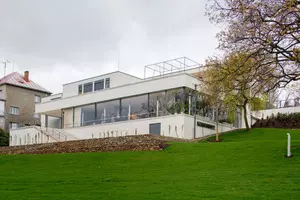
the Tugendhat house
Mies's most famous project of the interwar period in Europe is the German pavilion from 1929 for Barcelona International Expo. A marvel: simple lines, glass, steel, marble... In short, it smacks of modernism. The only problem? This masterpiece was supposed to be ephemeral. So, after the show, they dismantled the whole thing. Fortunately, it was rebuilt in the 80s, because a monument like this doesn't deserve to end up in a box.
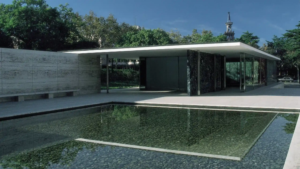
German Pavilion at the 1929 Barcelona World's Fair
Mies also designed the "Barcelona", a jewel for the kings ofSpain. A modern throne, all leather and stainless steel, inspired by the folding chairs of ancient Rome. Luxury and simplicity, a true declaration of intent. Except that those ungrateful monarchs never even sat on it. Too bad for them, the chair has become an icon all the same.

Barcelona armchair
In 1930, Mies was appointed director of the Bauhauswho moved from Weimar to Dessau in 1925. But between Nazi attacks from outside and left-wing student revolts from within, the school was in a perpetual state of turmoil. As a result, in 1933, the curtain came down.
In 1937, Mies arrived in the United States. He didn't have time to settle down before he landed a job as a boss at the School of Architecture at the Armour Institute in Chicagofuture Illinois Institute of Technology for those in the know. He stayed for two decades, and by the time he handed over the keys in 1958, the school was a worldwide star, renowned for its rigorous teaching methods and its campus, designed by Mies himself.
The campus is a masterclass in simplicity. Between 1939 and 1941, Mies designed uncluttered cubes that could be adapted to suit the school's every whim. Exposed steel, glass galore to reflect the decor and yellow-brown brick: that was his recipe. No frills, just functional elegance
It was also in the United States that Mies met Lora Marxa talented sculptor. Although they never officially married, Lora became his companion from 1940 onwards, and remained his closest friend in America until her death. Their relationship, both personal and professional, brought a new dimension to Mies's life.
After the war, Mies' office became a project factory. Orders poured in, and not the least: skyscrapers by the bucketload, steel colossi wrapped in glass facades.
Visit Promontory Apartments in Chicagodelivered in 1949. Or the Lake Shore Drive Apartmentswhich were built in the same town in 1951. And to top it all off, the Seagram Building in New York (1956-58), a jewel of a high-rise office, clad in glass, bronze and marble, designed with his partner Philip Johnson. Every line, every proportion is thought out to the millimetre.

Seagram Building, New York
In the '50s, America was fueled by the dream of technical progress, much like the German idea of Gesamtkulturbut in a stars and stripes version. As a result, clones of Mies' steel and glass towers sprang up all over the country and beyond. It was the golden age of international styleMies was its undisputed maestro. Mies van der Rohe is the direct inspiration for Minoru Yamasakithe architect of Twin Towers.
Also during this period, Mies applied his modernist aesthetic to three house structures. Farnsworth House à Plano, Illinoiscompleted in 1951, a pure marvel of transparency and minimalism, like a floating cube, all glass and steel. Then the Robert McCormick House à Elmhurstcompleted in 1952, which today forms part of the Musée d'Art d'Orsay.Elmhurst. Finally, the Morris Greenwald House in Weston, Connecticutcompleted in 1955, another masterpiece of simplicity. Three houses, three collector's items. And, between you and me, that's about it - the rest is for the giants of glass and steel.
Visit Farnsworth Housebuilt between 1945 and 1951 for the doctor Edith Farnswortha glass house set in the countryside. But behind the masterpiece, the affair turns into a fistfight.
At first, the doctor was thrilled, almost in love with the project. But very quickly things started to go wrong. First with the costs: "Too expensive! Then overruns: "How much longer is this circus going to go on? As a result, shortly before completion, the strained personal relationship between Farnsworth and Mies led the architect-contractor to sue his client for non-payment of 28,173 $. The Farnsworth HouseBut it's a bit of a battering, reputation-wise. But what do you expect? Today, she's a legend of modern architecture. Just goes to show, even geniuses and their clients can end up taking each other by the scruff of the neck, which is reassuring for us mere mortals.
3d video of the Farnsworth house by Elips
In the 1960s, Mies continued to create beautiful buildings, including the Bacardi in Mexico City (1961), the office building One Charles Center in Baltimore (1963); the Chicago Federal Center (1964); the Washington Public LibraryD.C. (1967); 20th Century Gallery (later called the New National Gallery) à Berlinconsecrated in 1968. The IBM building (1972), in Chicago, was completed after his death.
Mies wasn't much of a talker, was he? Minimalist, mate. "Less is more", he used to say. Translation: "Keep it simple and shut up". When a student showed him a model, he'd mumble: "Not bad. But simpler would be better. One sentence, one dogma.
All you had to do was avoid moving a chair without his permission, even to the point of moving a piece of furniture half a centimetre, as on the German pavilion at the 1929 world's fairHe's a psychopath with an eye for detail, just to piss everyone off... Germanic, in fact.
Mies will continue to live alone in a spacious apartment in an old building near Lake Michigan. Chicago until his death in 1969. But he leaves behind a legacy of masterpieces and quotations to ponder: "Never talk to a client about architecture. Talk to him about his children. It's simply good politics; most of the time, he won't understand what you have to say about architecture."
A visionary, he fought for purity of form and functionality without frills. Today, his work continues to set the standard, and his ideas continue to find their way into the concrete and steel of contemporary architecture. A true boss, whose shadow still looms over the profession.
Pascal T.

